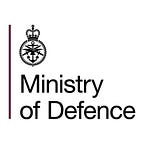The Joint Expeditionary Force (JEF) explained
Ten nations together, poised to respond to crises whenever and wherever they unfold
Denmark 🇩🇰 Estonia 🇪🇪 Finland 🇫🇮 Iceland 🇮🇸 Latvia 🇱🇻 Lithuania 🇱🇹 Netherlands 🇳🇱 Norway 🇳🇴 Sweden 🇸🇪 UK 🇬🇧
What is JEF?
Launched in 2014, the JEF is a coalition of ten like-minded nations. They share a commitment to democracy, human rights and the rule of law, as well as a long history of operating together.
All the nations share a determination to maintain the security of northern Europe. This includes countering persistent malign influence operations designed to weaken western societies.
Like most military alliances, defence strengthens the bond between allies and helps build new relationships around the world. Co-operating with the international community helps secure a better, fairer and safer world.
JEF nations;
- Share the same values.
- Act quickly and continuously.
- Help bring stability and security in the North Atlantic, Baltic Sea Region and in the High North.
- Come together to enhance each other’s military skills and capabilities.
What is the UK’s contribution?
The UK is proud to be at the centre of JEF, we are the framework nation. We are an open and outward-looking nation.
The UK’s physical contribution to the JEF includes personnel, equipment and capabilities drawn from the Royal Navy, Royal Marines, British Army and Royal Air Force.
The JEF demonstrates the UK’s ability to project an agile force anywhere in the world, both individually and in partnership with other allied nations.
The maritime JEF contribution is led by the Royal Navy which is responsible for making sure that any deployment increases the ability and effectiveness of nations working together.
JEF Operations and Exercises
Joint Expeditionary Force undertakes a series of demanding exercises that are designed to ensure that the participant nations are ready to deal with the security challenges we face across the spectrum of competition and conflict.
Any JEF deployment will be configured to meet the full spectrum of security challenges Participant Nations face. However, the JEF is also capable of evacuation operations, disaster relief, humanitarian missions, and any number of other supporting tasks.
JEFs first deployment — Exercise Baltic Protector (2019)
In 2019, Baltic Protector marked the first deployment of the UK-led JEF Martime Task Group, with command of the group conducted by HMS Albion.
Nearly 2,000 military personnel and 17 vessels from nine nations joined together to contribute to the first major maritime training deployment of the JEF.
JEF’s first operational deployment — Maritime patrols in the Baltic Sea (2021)
In March 2021, HMS Lancaster and Westminster, tanker RFA Tiderace and vessels from all three Baltic states — Latvia, Lithuania and Estonia — joined forces for a joint demonstration of the participant nations commitment to the security and stability of the region.
This was the first operational deployment for the JEF. The operation focused on maritime security in the southern Baltic Sea.
The deployment covered firefighting, medical training, damage control, ships sailing in close formation, refuelling at sea, gunnery, air defence, and intensive training with helicopters — plus adjusting to sub-zero temperatures and snowstorms as the ships pushed deeper into the Baltic.
